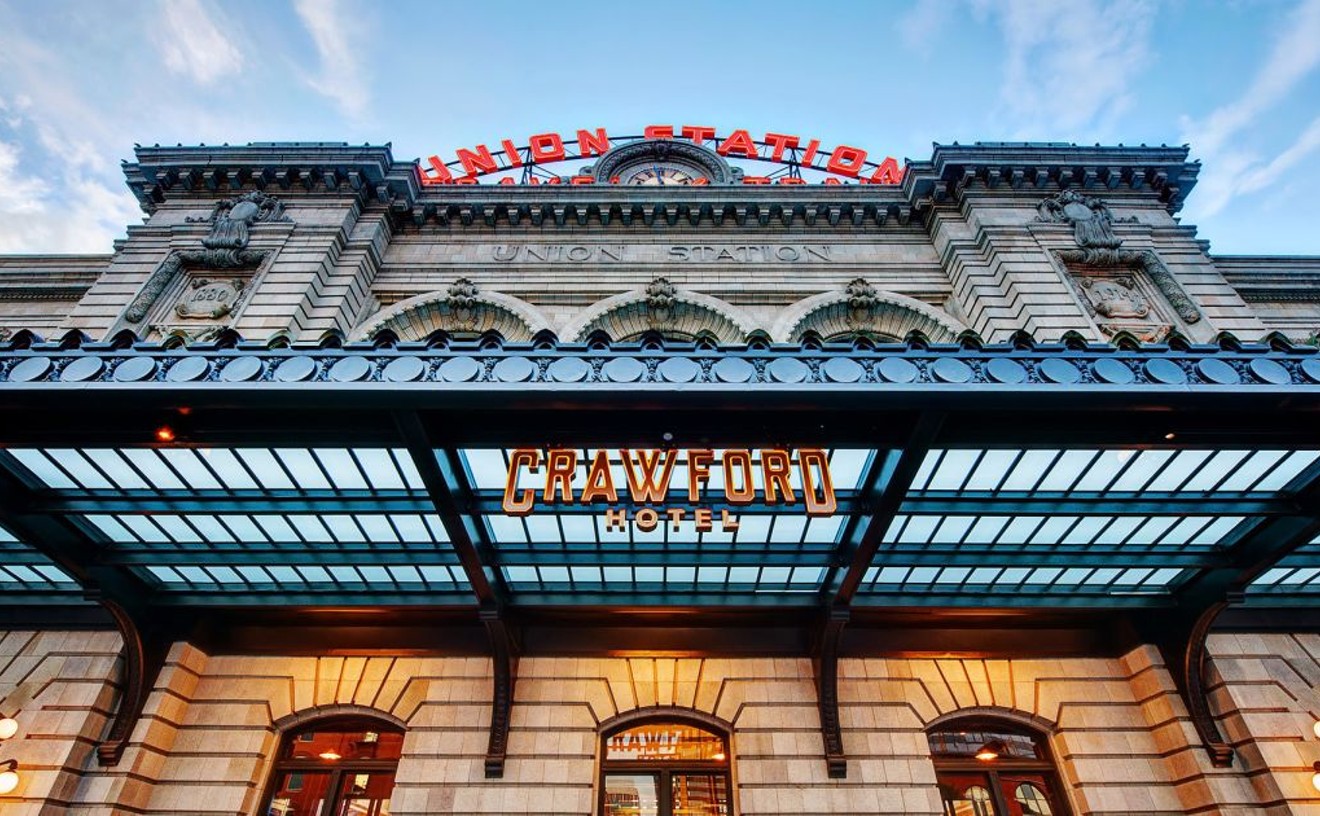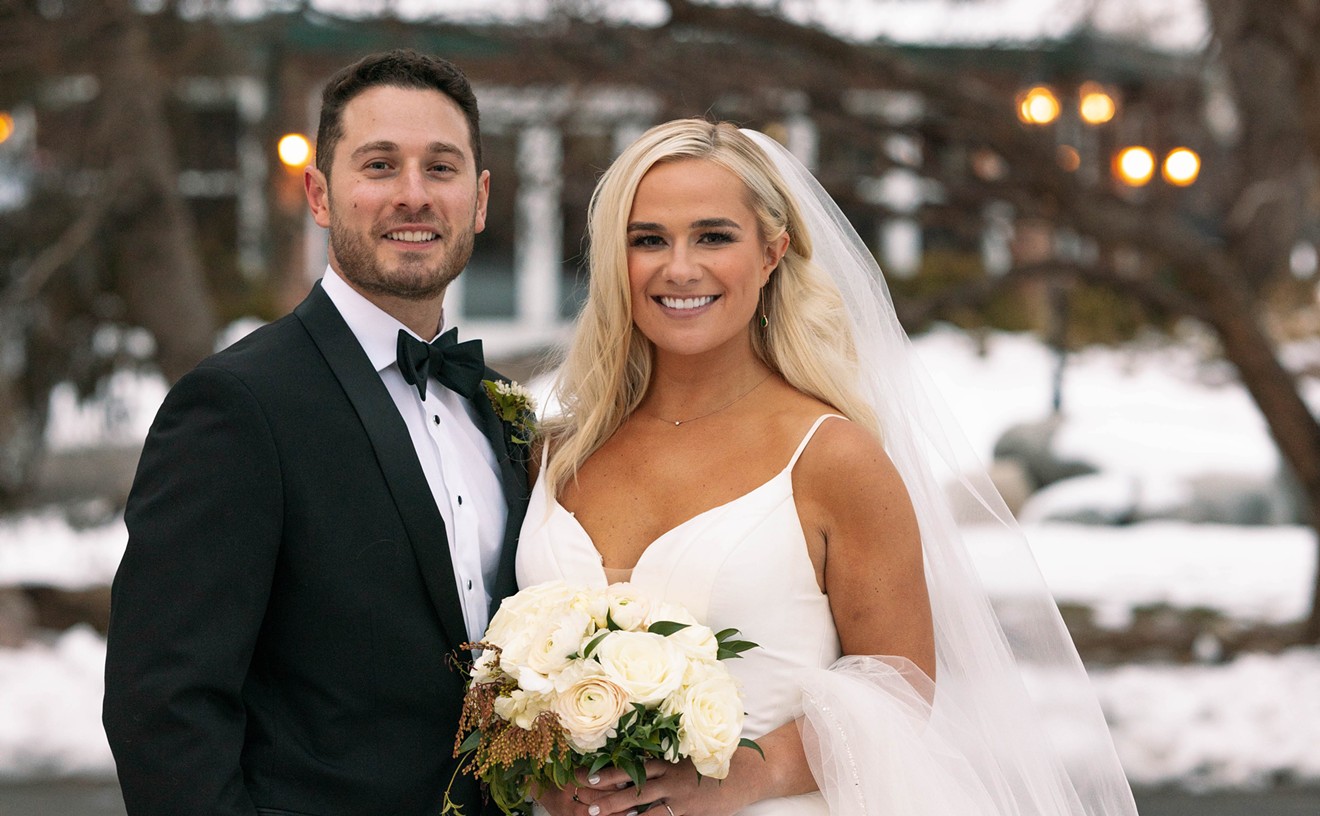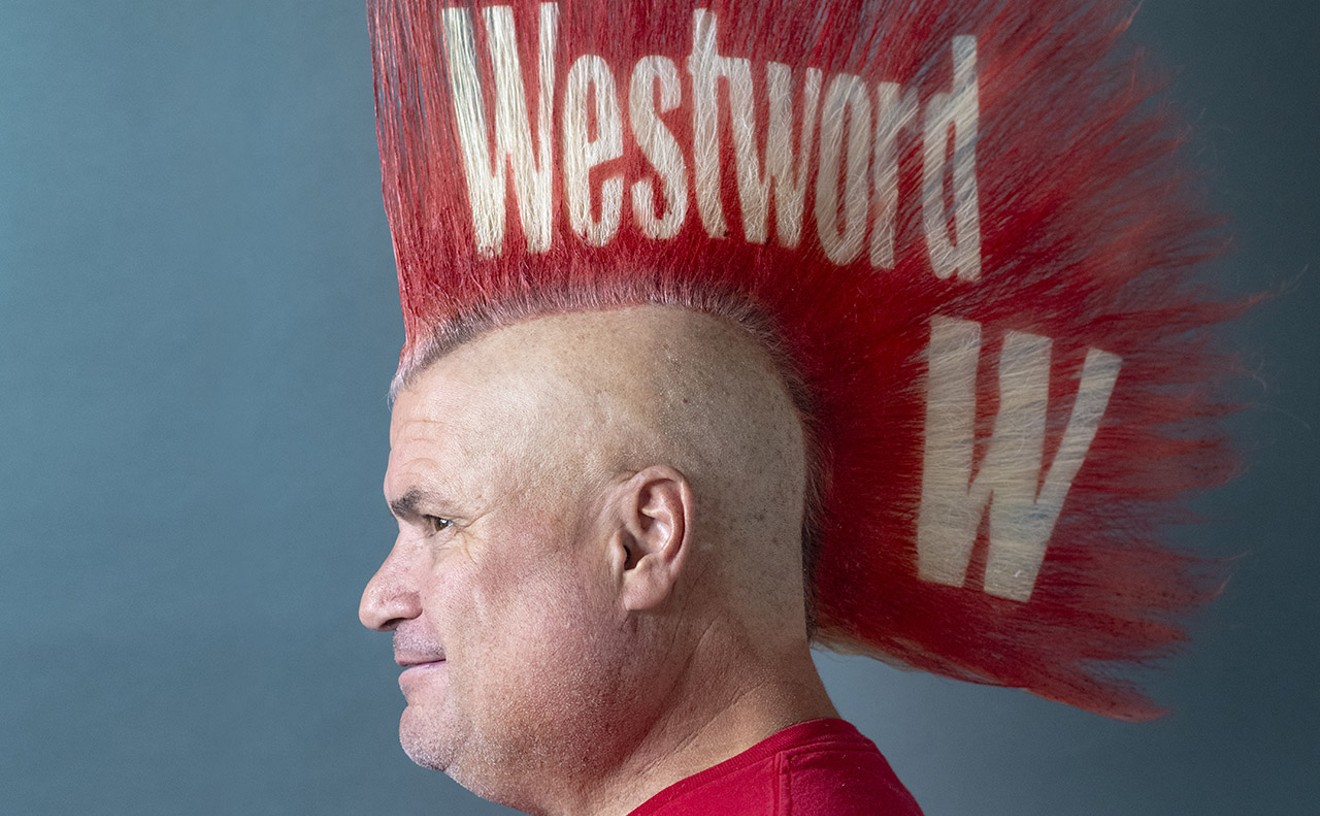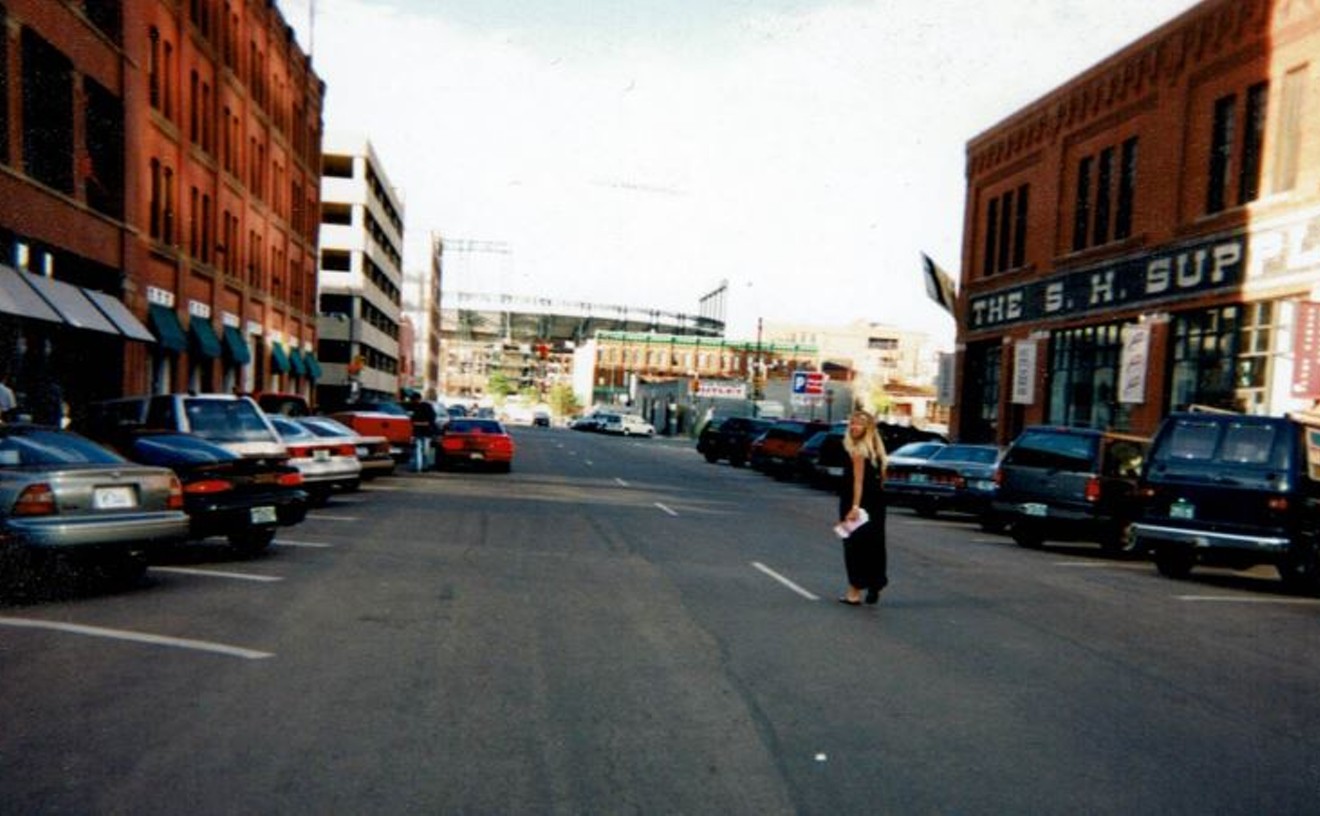Yoko Ono is a towering figure in the twentieth-century art and music worlds. She was one of the main artists behind the Fluxus movement, and her performance and visual art and sound experiments had made her famous before she ever met her future husband, John Lennon of The Beatles. Lennon was a visual artist as well as a musician; his simple, spare and playful art was as accessible as any of his music and imbued with a similarly unique creative vision. Ono is now exhibiting some of Lennon's visual art at various art galleries around the country, including Fascination Street Fine Art, where special prints are for sale. We recently spoke with Ono about her late husband's artwork, its populist sensibility and the importance of giving.
Westword: You're displaying the art of John Lennon around the country. As someone who was involved in the avant-garde art world early on, including being part of the Fluxus movement, how would you say that John's work fits in with the history of art?
Yoko Ono: One day, a long, long time from now, maybe [it will fit in with the history of art]. Things go very fast, so I don't know when that's going to be. But I think John's work will be very highly rated because not one artist I see in museums is really fun and has a sense of humor as John does.
Why is now a good time to display his work?
I think it's a great time. I think all of us in the United States and in other countries are going through a very hard time. So when we go see something that is pure art in the sense of spirit like John's, it really gives you a cleansing feeling.
How does it give one a cleansing feeling?
I think it's very interesting that John didn't take himself too seriously but took other people seriously in that he wanted to let them know that it's all right to have fun, it's all right to not just be too serious or contemplative about life. When you walk into the gallery or the exhibition space, people feel like, “Hey, I'm all right." That's a very important feeling.
John had done visual art early in life and focused on music but in the late '60s got back into doing visual art. What do you think sparked his interest in getting back into that?
I really like the idea, as I said before, that it was giving inspiration to other artists: “I can do this. I'm just going to do my own.” That kind of thing. You don't feel that way when you see Picasso: “He had a different life than mine!” John was one of you. He did it well. He used that situation, which wasn't very good, coming from Liverpool at a time when it wasn't respected at all and he made it respectable. It is my concern to just show John's work around the world because it hasn't been displayed anywhere, really. In the beginning it was hard to show John's works because most galleries and exhibition spaces said they didn't do that kind of thing. It was for “real” artists. Now I think people see it as “not bad.” John would like the fact that he's still circulating because he was a communicator and in everything he did he was communicating something. I just want to share that with people.
The “Bag One Portfolio” was confiscated by Scotland Yard in 1969. Did you ever get any of that stuff back?
Well, you know, it was not that easy. We started that Bag One stuff with a little bit of erotica. So that may have been a bad way to start it. We had already done a show of Bag One and that was confiscated by Scotland Yard. We said, “Wow,what are they doing? Don't they know that many artists have already done erotic art?” The concept that came from John was very different and people thought that he should behave himself. Now that I think back on that stuff, I think it's okay that we did it. The other thing is, I'm sure that you noticed, that each line is incredibly artistic. I compare that with Picasso's style even though it's very different. Everything that Picasso did is found within the lines. Even just the lines. You don't even have to know the theme of the painting but the lines just speak for themselves. Very powerful. John's work is that way. You see John's work, before you know what it's about, his lines are incredibly emotional, powerful and witty and it just makes you feel, “Okay, I got something from this.”
The exhibit was set up to benefit local charities?
Each time I've done an exhibition of John's work, I always ask the local curator to find me a good charity to benefit. We usually give 10 to 20 percent to them.
Why is that important to you?
I think it's very important. John was very concerned about the world and he was trying to better the world. That sounds very ambitious, but I think all people now are activists trying to do their best. The 1 percent of the world is still thinking having more is more fun or something. I don't understand those people. I think most normal people would like to see the world become better and more peaceful and we're all working for it. And John was working for it. So I think it's important for us do something for the world and to give. Giving is very important.
There are limited edition prints for sale?
The reason I'm doing that is that some people can't afford to buy a lithograph and it's better to make something people can afford to buy.
See the visual art of John Lennon through June 30 at Fascination Street Fine Art, 315 Detroit Street. For more information on the exhibit and for gallery hours, visit fascinationstart.com or call the gallery at 303-333-1566.
If you'd like to contact me, Tom Murphy, on Twitter, my handle is @simianthinker.
[
{
"name": "Air - MediumRectangle - Inline Content - Mobile Display Size",
"component": "12017618",
"insertPoint": "2",
"requiredCountToDisplay": "2"
},{
"name": "Editor Picks",
"component": "17242653",
"insertPoint": "4",
"requiredCountToDisplay": "1"
},{
"name": "Inline Links",
"component": "18838239",
"insertPoint": "8th",
"startingPoint": 8,
"requiredCountToDisplay": "7",
"maxInsertions": 25
},{
"name": "Air - MediumRectangle - Combo - Inline Content",
"component": "17261320",
"insertPoint": "8th",
"startingPoint": 8,
"requiredCountToDisplay": "7",
"maxInsertions": 25
},{
"name": "Inline Links",
"component": "18838239",
"insertPoint": "8th",
"startingPoint": 12,
"requiredCountToDisplay": "11",
"maxInsertions": 25
},{
"name": "Air - Leaderboard Tower - Combo - Inline Content",
"component": "17261321",
"insertPoint": "8th",
"startingPoint": 12,
"requiredCountToDisplay": "11",
"maxInsertions": 25
}
]











